Venice - Art in the Palazzo Ducale
Back to Italy 2016 Index
City of Venice
On the Canals
The Palazzo Ducale, or Doge's Palace, was the center of political power in Venice
for several hundred years, during the height of venetian influence. It is virtually
the symbol of Venice and a masterpiece of gothic architecture. From its
foundations laid in the 14th and 15th centuries, to the embellishments added during
the Rennaisance era, it is a marvel to behold. Touring the rooms of the palace is
almost overwhelming in scale. It became a museum in 1923.
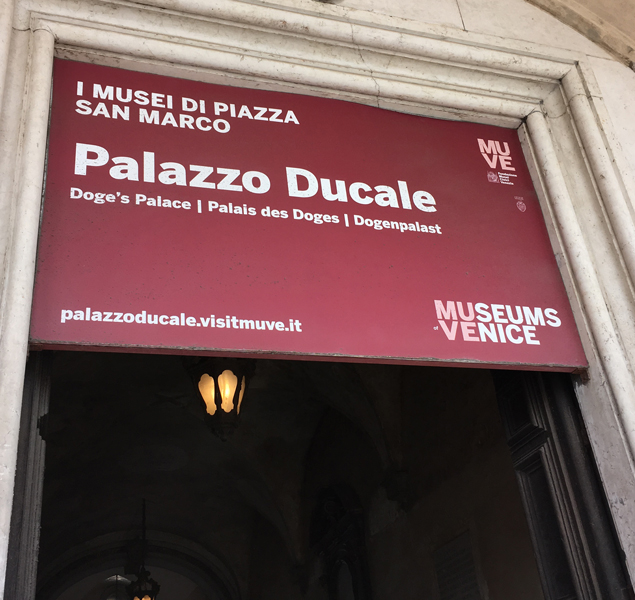 |
Scala d' Oro
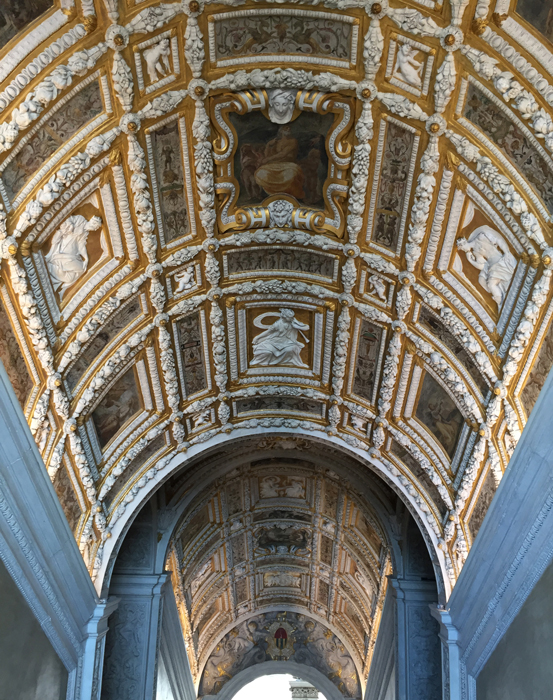 |
| The
Doge's apartment only occupies one of the Palace's three floors and to
get to it you climb the beautiful Golden Staircase - Scala d' Oro, begun halfway
through the 16th century by Sansovino. The first ramp of the stairway,
dedicated to Venus - an allusion to the conquest of Cyprus - owes
its name to the spectacular golden stucco decorated vault and was
formerly used only by Magistrates and important people. |
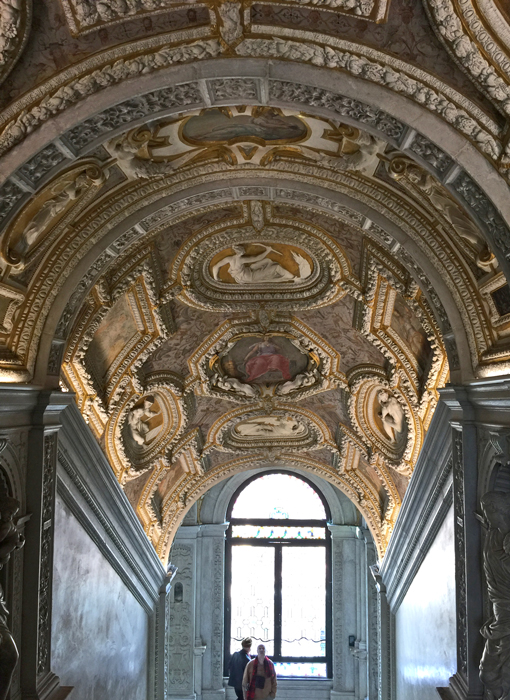 |
| A secondary staircase leads up to the second floor of administrative and ceremonial rooms. |
Most of the Palace furnishings were stolen by Napolean's invading armies, but
the palace art remains as a testament to the lifestyles of the rich and famous at the
pinnacle of venetian power.
The Four Doors Room
The Four Doors Room was the formal antechamber to the more important rooms in the palace, and the
doors which give it its name are ornately framed in precious Eastern marbles; each is surmounted by an
allegorical sculptural group that refers to the virtues which should inspire those who took on the
governing responsibilities.
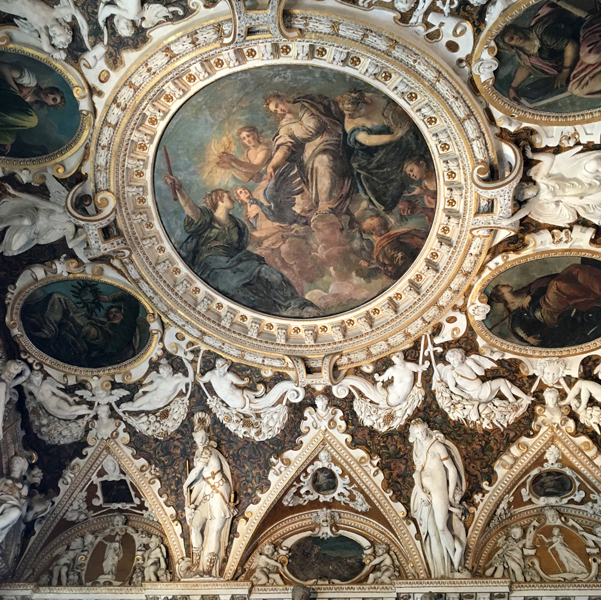 |
| Ceiling detail. |
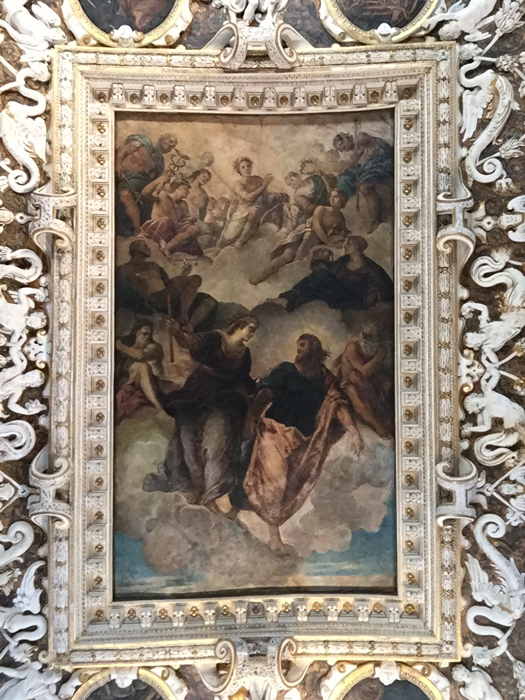 |
| Ceiling detail. |
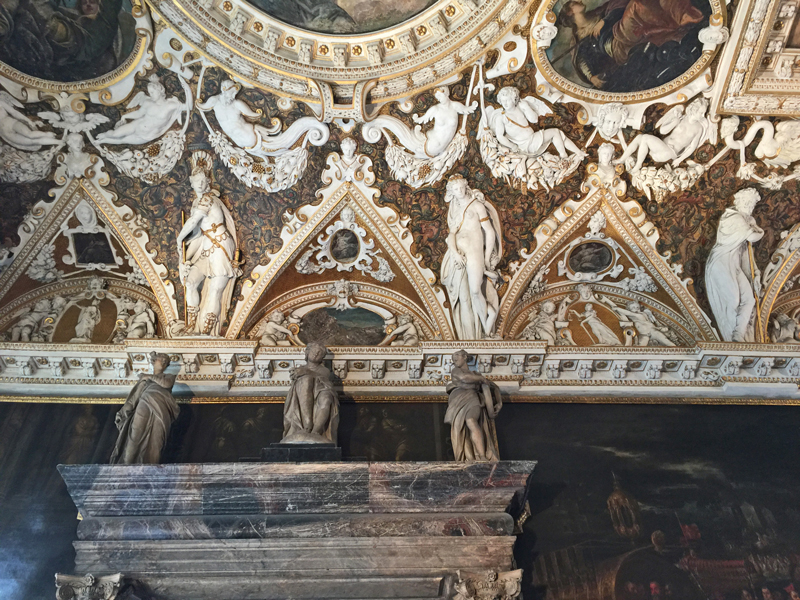 |
| Virtues over one of the doors. |
Sala del collegio
The Sala del Collegio was the room where foreign delegations or important people were received and
granted an audience by the College, a magistry composed of the Doge and six councillors. The renovated
gilded ceiling frames a series of works by Veronese between 1578 and 1582.
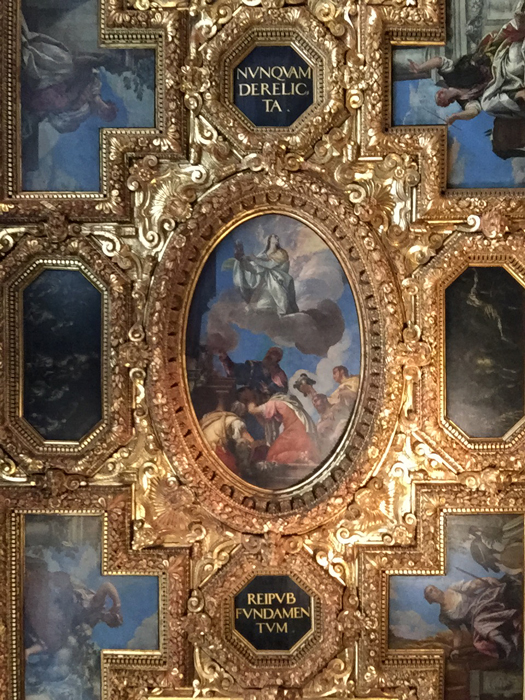 |
| Religion and Faith. |
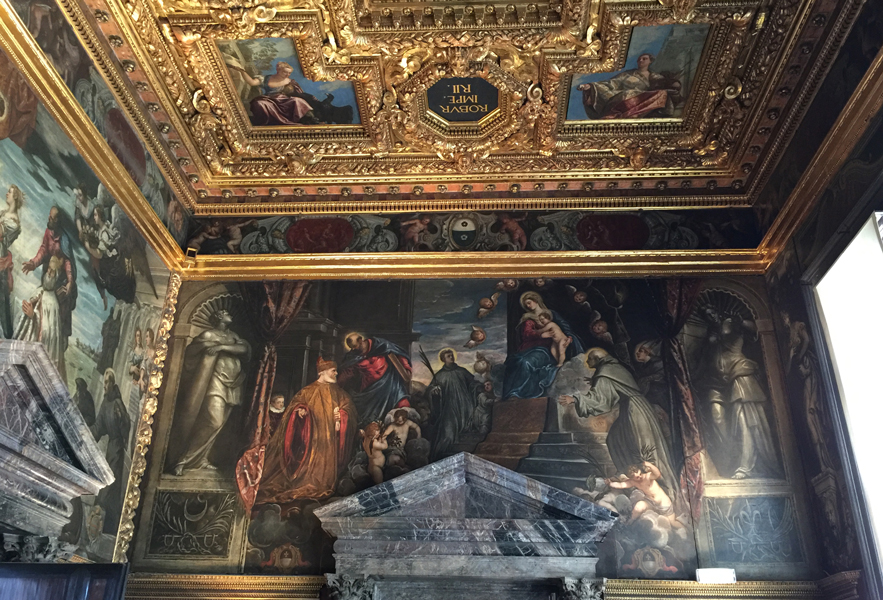 |
| Doge
Andrea Gritti assisted by San Marco, in front of the Virgin and other
saints, by Tintoretto. The L-shaped panels on the ceiling show Moderation, on
the left, and Ricompensa, on the right. |
 |
| Votive Portrait of Doge Sebastiano Venier, doge of Venice when the palace burned in 1577, leaving him with a broken heart. |
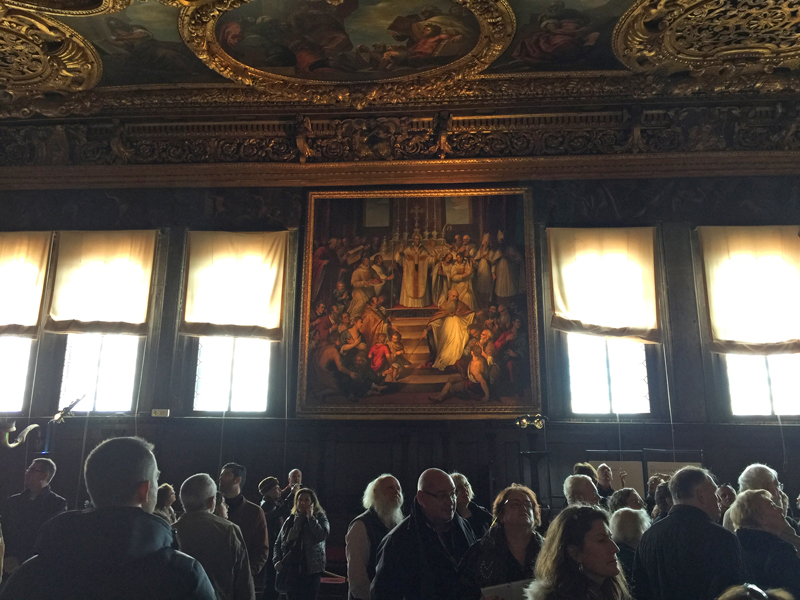 |
| St. Lawrence Justinian gives the blessing in San Pietro di Castello (oil on canvas), Marco Vecellio (1545-1611). |
 |
| The Doges Lorenzo and Girolamo Priuli praying in front of the Redeemer, by Jacopo Palma il Giovane 1590 - 1595. |
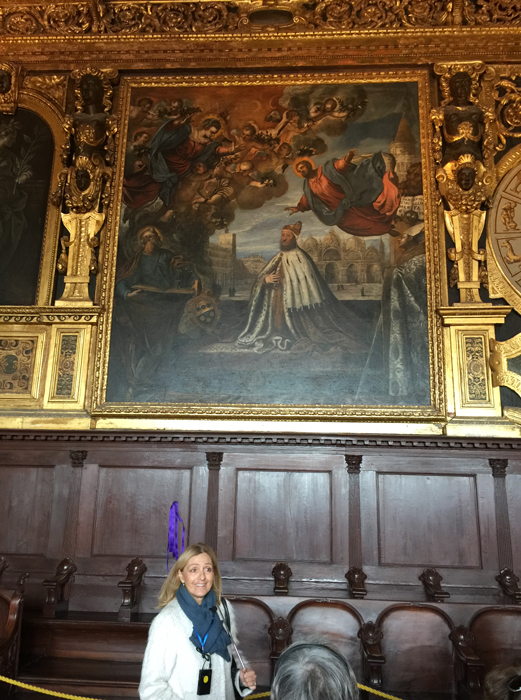 |
| Our tour guide explains 'The Doge Pietro Loredan Calls for the Cessation of the Famine', by Tintoretto. |
Hall of the Senate
Also known as the Sala dei Pregadi, the Doge asked the members of the Senate to take part in the meetings held here.
The Senate which met in this chamber was one of the oldest public institutions in Venice; it had first been founded in the
13th century and then gradually evolved over time, until by the 16th century it was the body mainly responsible for overseeing
political and financial affairs in such areas as manufacturing industries, trade and foreign policy.
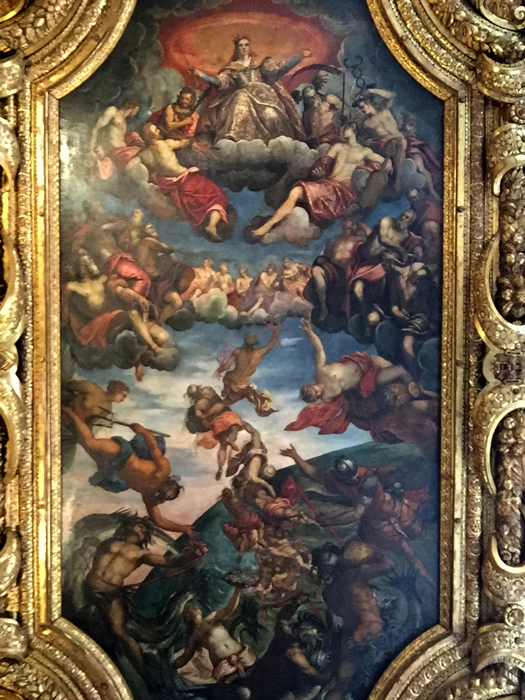 |
| This
painting by Tintoretto (with the assistance of his son, Domenico
Robusti) portrays the Triumph of Venice as an ascending vortex of
mythological sea creatures which rise towards Venice, seated above, to
offer gifts and recognition. |
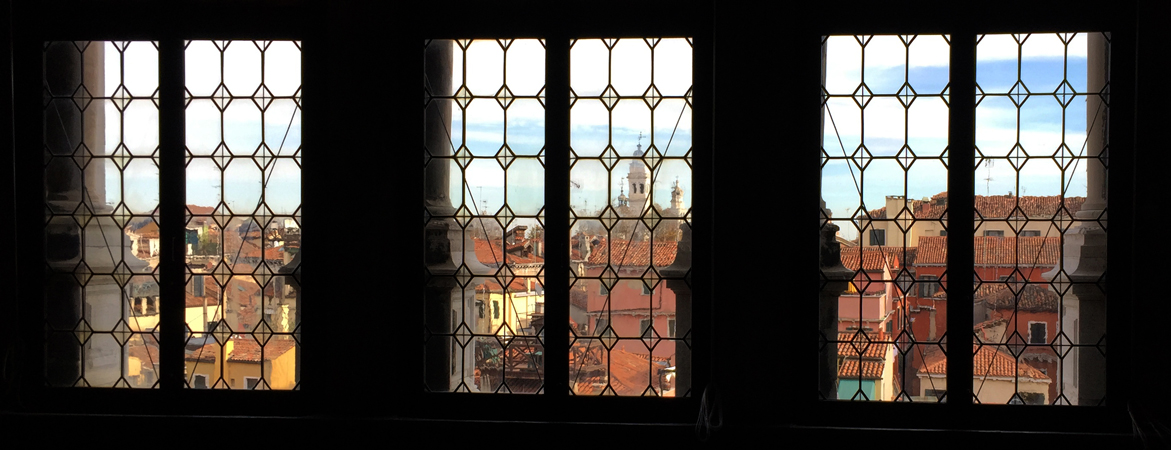 |
| View of the city from the Palazzo Ducale. |
Hall of the Council of Ten - Sala del Consiglio dei Dieci
The Chamber of the Council of Ten takes its name from the Council of Ten which was set up after
a conspiracy in 1310, when Bajamonte Tiepolo and other noblemen tried to overthrow the institutions of the State.
It was the secret state court, in charge of the secret police and with control over every aspect of public and private
life. There was no appeal against their judgement.
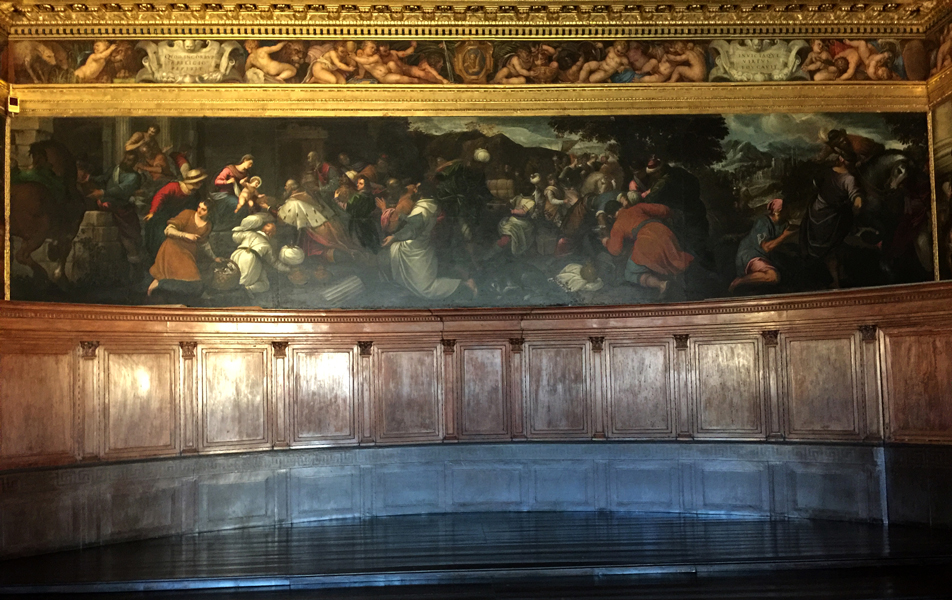 |
| Hall of the Council of Ten. |
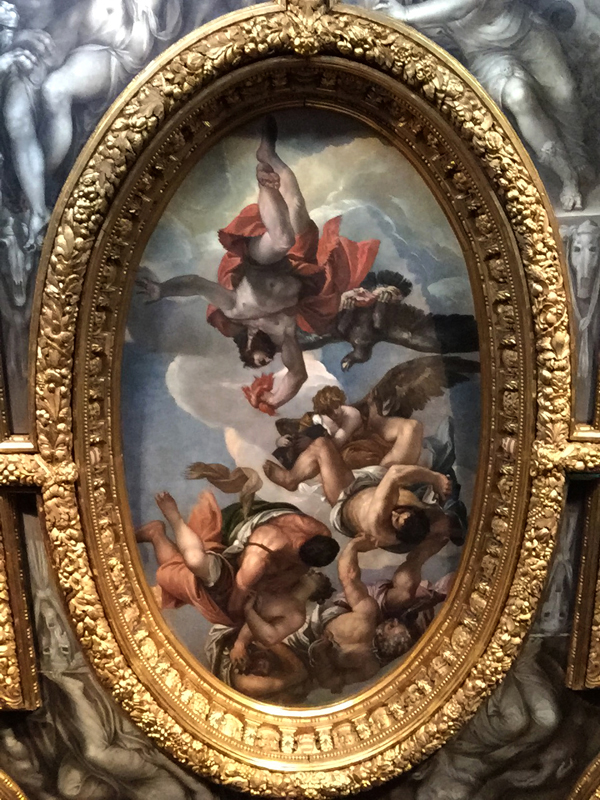 |
| Jove (Jupiter) descending from the skies to hurl thunderbolts at the Vices. |
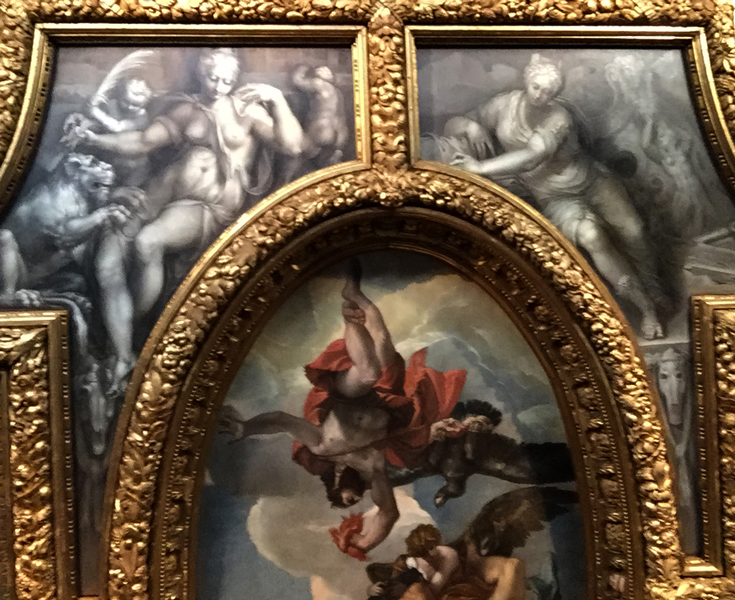 |
| On the left, Venice, on the right, The Peloponnese, both by Gian Battista Zelotti. |
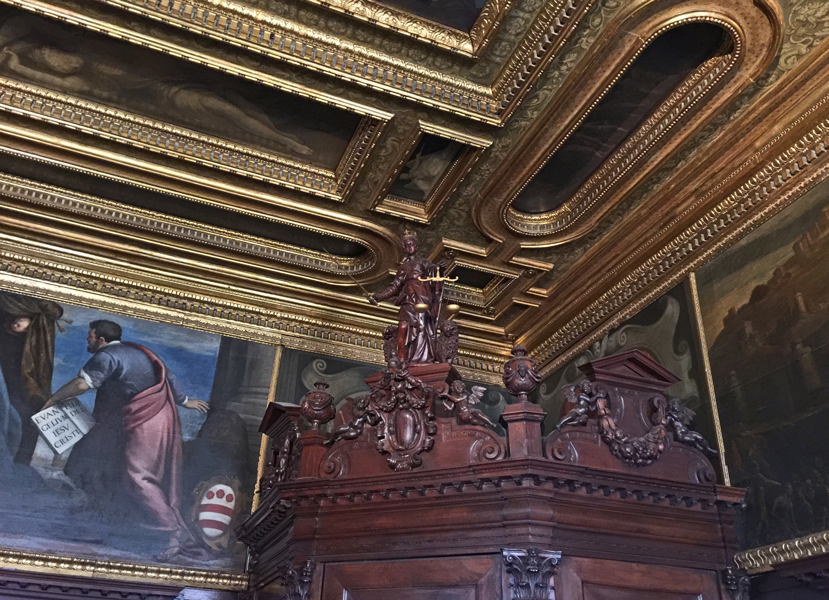 |
| Scales of Justice, The Quarantia Criminale Chamber. |
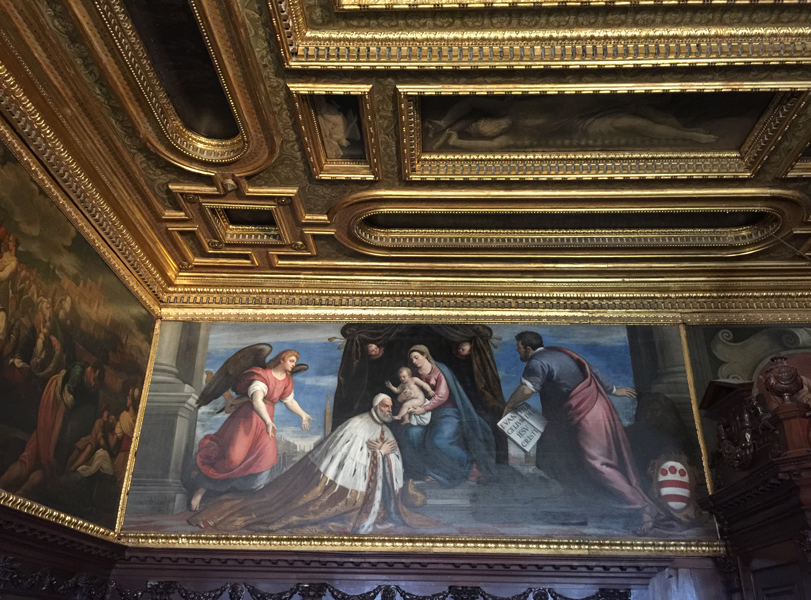 |
| This
painting showing the Doge paying homage to Mary and the Christ Child is
the room into which the secret denunciations would come, through a
double door 'mail box'. |
 |
Sala del Maggior Consiglio
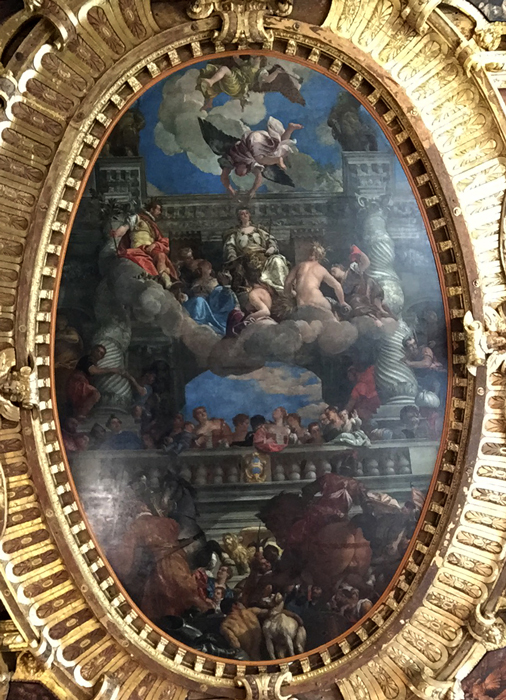 |
| The Apotheosis of Venice, by Paolo Caliari detto Veronese, 1582, Sala del Maggior Consiglio. |
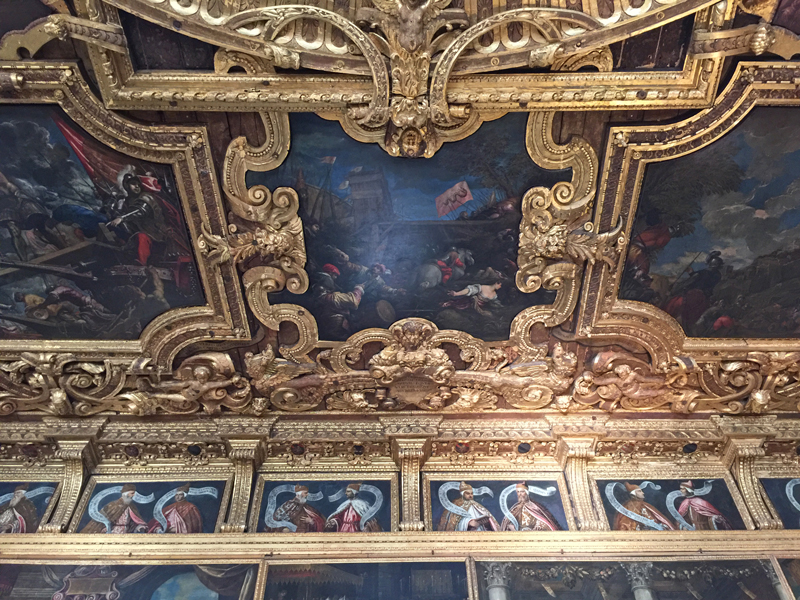 |
| Detail, Chamber of the Great Council - 76 of the doges of Venice are shown in individual portraits. |
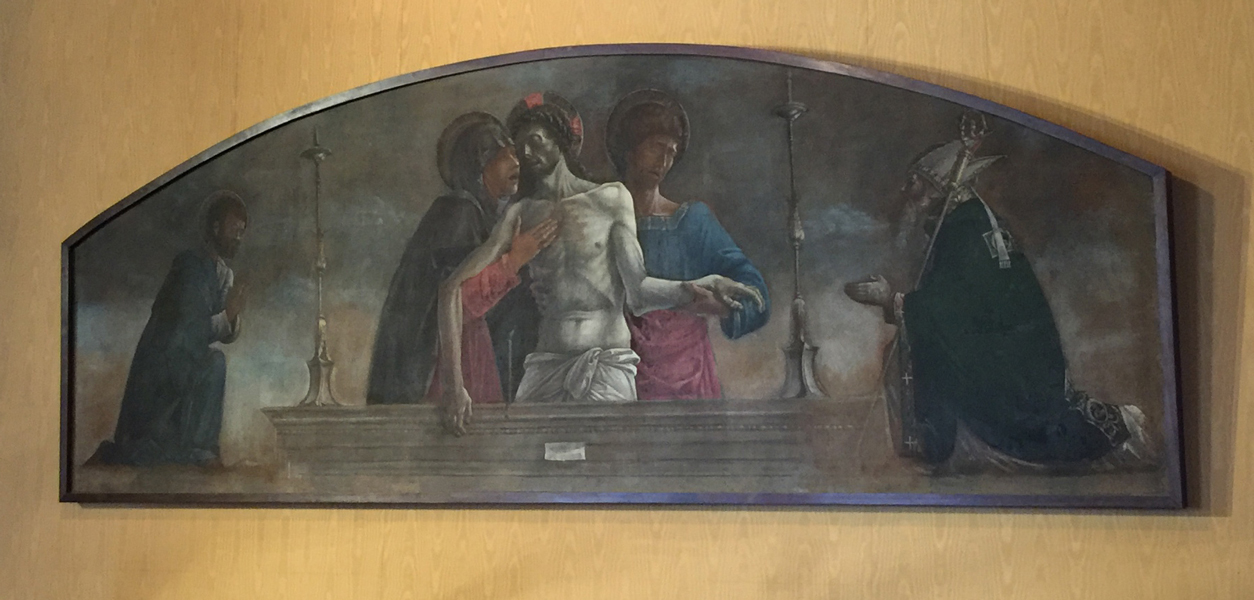 |
| Madonna
and Saint John the Evangelist supporting the dead Christ. They are
flanked by Saint Mark the Evangelist (at the left) and Saint Nicholas
(at the right). |
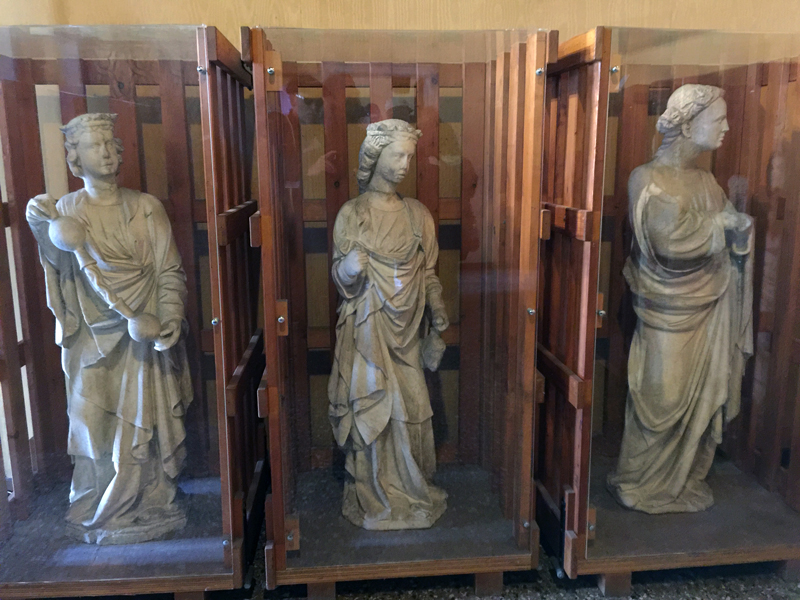 |
Sala de Censori
The State Censors were set up in 1517 by Marco Giovanni di Giovanni, a cousin of Doge Andrea Gritti (1523–1538)
and nephew of the great Francesco Foscari. The title and duties of the Censors resulted from the cultural and
political upheavals that are associated with Humanism. In fact, the Censors were not judges as such, but more like
moral consultants, their main task being the suppression of electoral fraud and protection of the State’s public
institutions. On the walls of the Censors' Chamber hang a number of Domenico Tintoretto’s portraits of these magistrates.
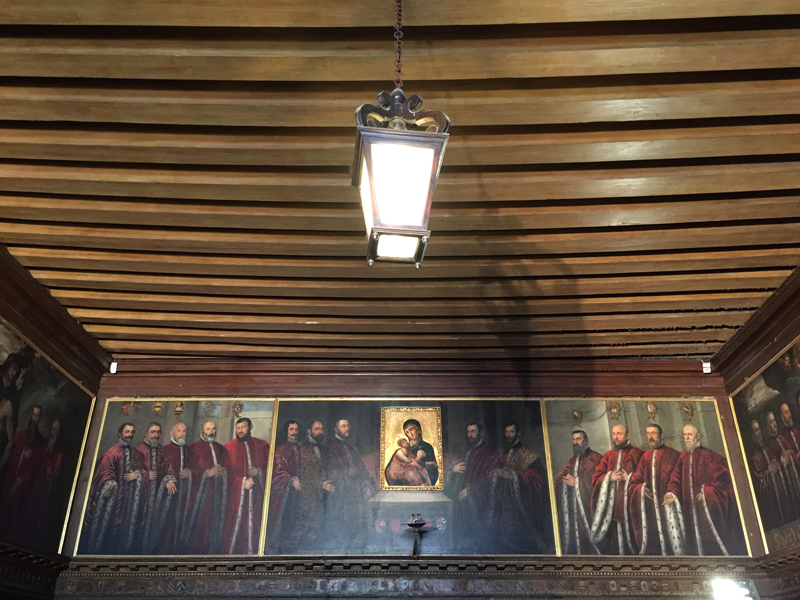 |
| The Sala dei Censori |
 |
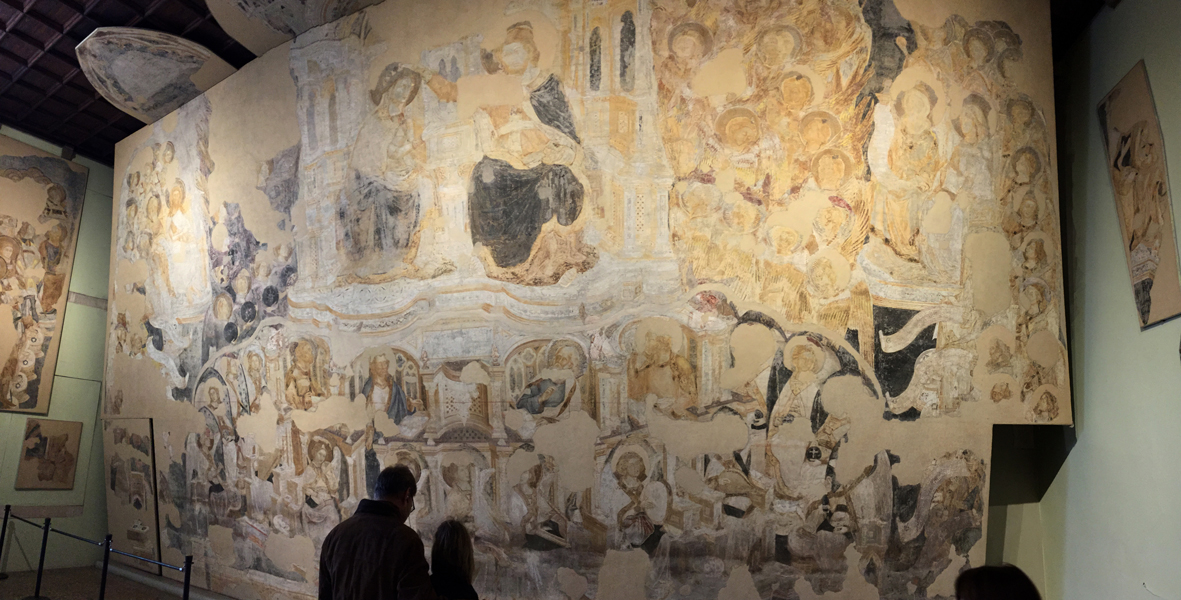 |
| The
Guariento Room's name is due to the fact it houses a fresco painted by
the Paduan artist Guariento around 1365. Almost completely destroyed in
the 1577 fire, the remains of that fresco were, in 1903, rediscovered
under the large canvas Il Paradiso which Tintoretto was commissioned to
paint. |
Back to Italy 2016 Index
City of Venice
On the Canals